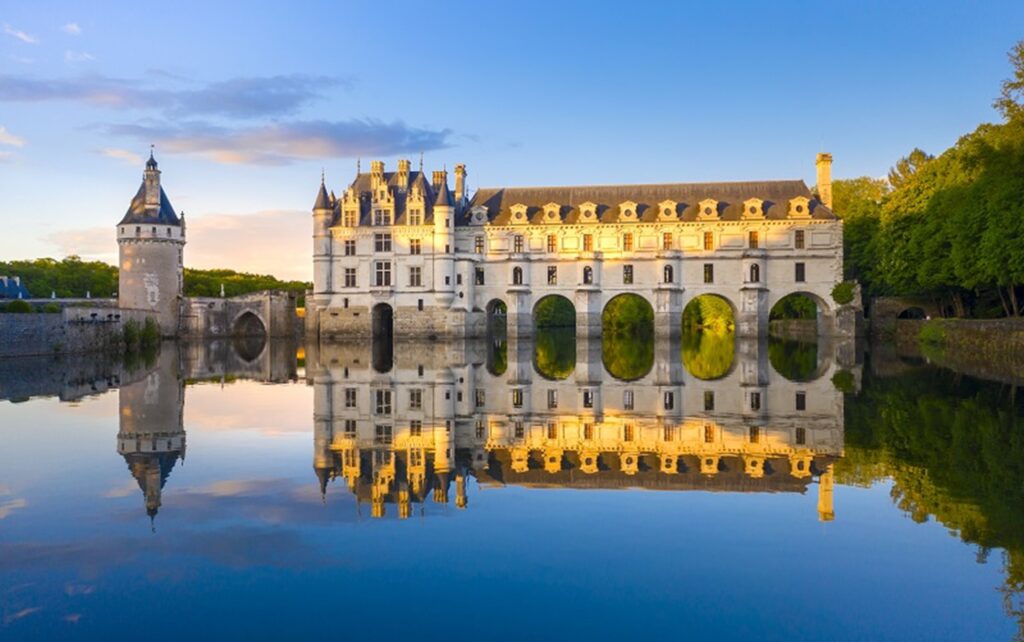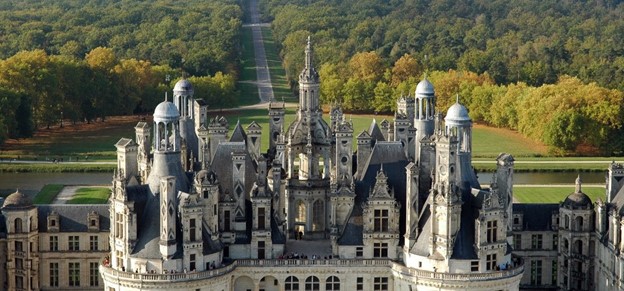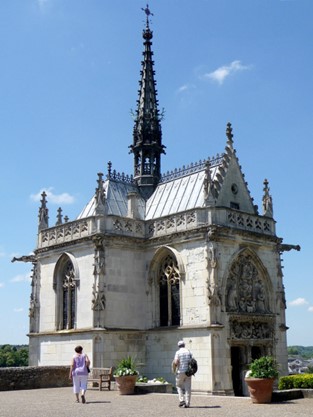There are some mighty rivers in this world that have had historical importance. There’s the Mississippi, the Nile and closer to home, the Hudson and the St. Lawrence. In France, there is a river that is long but not mighty, the Loire, with history all along its route. It rolls along quietly with very limited navigability. But from the late Middle Ages into the Renaissance, France was ruled from various spots along the Loire.
Many of the castles where the kings and nobles lived in those days are still there, open for public visits. And oh, by the way, they make wine in the Loire valley, mostly light white wines such as Vouvray, Muscadet and Sancerre. There are some reds, the best known of which is Chinon. But about those castles…
There are nearly 50 of them and it seems that you see a château (French for castle) every time you turn a corner. They are hard to miss as you travel around the Touraine region. (The region is centered on the city of Tours, hence the name.) We haven’t visited them all but have seen quite a few. These are our favorites.
Blois Castle, with Francois I’s staircase. Photo courtesy of France This Way.
- Blois. This was a royal château, occupied off and on by a number of French kings, the most notable of whom were Francois I and Henri IV. It’s where Jeanne d’Arc went to be blessed before setting out to war. Each noble and king added or renovated a little here and there, so the result that can be seen today is massive. Much of the architecture is Italianate, due to the wars fought by the French in Italy during Blois’ heyday. Its most famous feature is the spiral staircase erected by Francois I.
The roof of Chambord castle. Photo courtesy of the Domain National de Chambord.
- Chambord. While this is the largest château in the Loire valley, it was originally Francois I’s hunting lodge. Unlike many of the other castles, this one was never really used for defensive purposes. Architecturally, it is the most decorated, with towers, turrets, buttresses and curlicues that don’t seem to have any particular function. It is worth walking around the roof, to see all the fanciful additions that make Chambord more beautiful. The double helix staircase in the interior is said to have been designed by Leonardo da Vinci.
The chapel of St. Hubert at Amboise, where Leonardo da Vinci is said to be buried. Photo courtesy of the Orange County Register.
- Amboise. And speaking of Leonardo, his remains are interred at Amboise, another royal château. He was lured away from France by, yes, Francois I who was a patron of the arts as well as a warrior king. The history of the castle goes back to the High Middle Ages, when it was quite definitely used for military and defensive purposes. It looms over the village of Amboise, where we have had some pleasant lunches.

Chenonceau castle. Photo courtesy of L’Indre par Velo.
- Chenonceau. We have saved the best for last. Chenonceau spans the little river Cher, with arches allowing the river to pass beneath it. One of the pleasures of visiting Chenonceau is rowing under the château. An interesting fact is that the Cher formed the border between Nazi-occupied France in World War II and so-called Free France to the south. Jews and other persecuted people would enter in the north and escape from the other end of the château. There are two notable gardens on either side of Chenonceau. One was built for Catherine de Medici, queen of France and wife of king Henry II. The other was built for the king’s mistress, Diane de Poitiers; she got the bigger, nicer garden but was forced to give it up when the king died.


